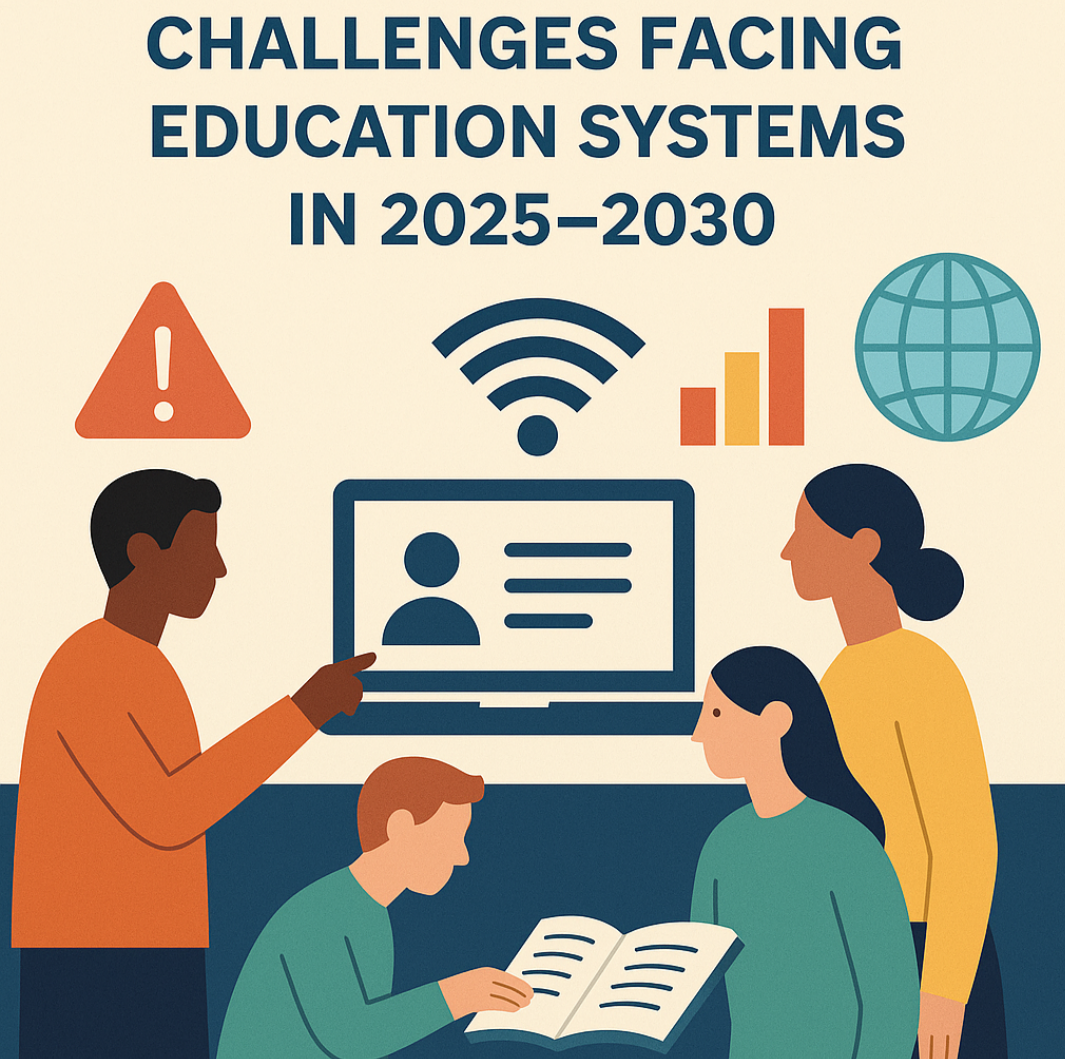
Challenges Facing Education Systems in 2025–2030
1. Integrating Technology Without Widening the Digital Divide
As we move deeper into the 21st century, the integration of technology into classrooms is no longer optional — it is essential. However, while platforms like Google Classroom, Khan Academy, and Coursera have expanded learning opportunities, they also highlight a critical issue: the **digital divide**.
In both developing and developed nations, millions of students still lack access to stable internet, modern devices, or digital literacy skills. As education systems rely more on digital tools, students without connectivity are left behind. According to UNICEF, over 1.3 billion children worldwide were affected by school closures during the COVID-19 pandemic, and a significant portion could not continue learning online.
The challenge for education systems between 2025–2030 is clear: how to embrace **AI-driven tools, virtual reality, and personalized learning systems** while ensuring equitable access for all students. Investments in infrastructure, teacher training, and affordable technology must be prioritized to bridge the gap.
2. Rising Skills Gap Between Education and Employment
The mismatch between what students learn in schools and the skills needed in the labor market continues to grow. A report by the World Economic Forum predicts that by 2025, **44% of core skills** required in jobs will change. Yet, many educational institutions still follow traditional curricula that have not adapted to modern industry demands.
Critical thinking, emotional intelligence, digital literacy, and problem-solving are now considered essential competencies. However, most public school systems lack the agility to evolve quickly. Moreover, vocational training and soft-skill development are often overlooked in favor of standardized testing and rote memorization.
Between now and 2030, education systems will need to **redesign curricula**, partner with the private sector, and focus on lifelong learning models. Companies like LinkedIn Learning and Udemy are already filling gaps, but the formal education sector must adapt to remain relevant.
3. Mental Health Crisis Among Students and Teachers
Mental health is emerging as one of the most urgent challenges in modern education. Studies show a sharp rise in anxiety, depression, and burnout among students of all ages. According to the CDC, the number of high school students in the U.S. experiencing persistent feelings of sadness or hopelessness rose from 28% in 2011 to over 42% by 2023.
The pandemic, social media pressures, academic stress, and economic uncertainty have all contributed to this crisis. Teachers, too, are under immense pressure, facing longer working hours, larger class sizes, and increasing expectations without proportional support.
Moving forward, schools will need to invest in **mental health services, counseling staff, and supportive environments** that prioritize well-being over performance metrics. Initiatives like the WHO School Health Services aim to provide global frameworks, but the implementation needs to be local, consistent, and stigma-free.
4. Teacher Shortages and Professional Development
Another growing concern is the global shortage of qualified teachers. The UNESCO Institute for Statistics estimates that the world will need an additional **69 million teachers** by 2030 to meet educational goals. However, teaching remains an undervalued and underpaid profession in many countries, leading to high turnover and reduced interest among younger generations.
The quality of education is directly linked to the quality of teachers. Yet, many systems fail to offer adequate professional development, mentorship, or growth pathways. Teachers often lack training in emerging areas such as **edtech tools, inclusive education, and trauma-informed teaching**.
Governments and education ministries must offer **better incentives, certification programs, and international collaboration**. Programs like Teach For All have shown promise by connecting passionate educators across borders, but large-scale adoption is still lacking.
5. Climate Change and Education System Resilience
Climate change is no longer a distant concern — it is affecting school systems directly. From extreme weather events destroying school infrastructure to health emergencies linked to pollution and heatwaves, education must adapt to a changing planet.
Schools need not only to teach climate literacy but also to become **resilient institutions**. This includes investing in sustainable buildings, hybrid learning capabilities, and disaster response plans.
Organizations such as the Education Commission advocate for climate-responsive education policies. Moreover, curricula must evolve to include **environmental science, civic responsibility, and sustainability**, preparing students to be responsible global citizens.
From 2025 to 2030, education systems across the globe will be tested like never before. Those that embrace innovation, equity, and mental wellness while preparing for the unknown will shape the next generation of learners, workers, and leaders.